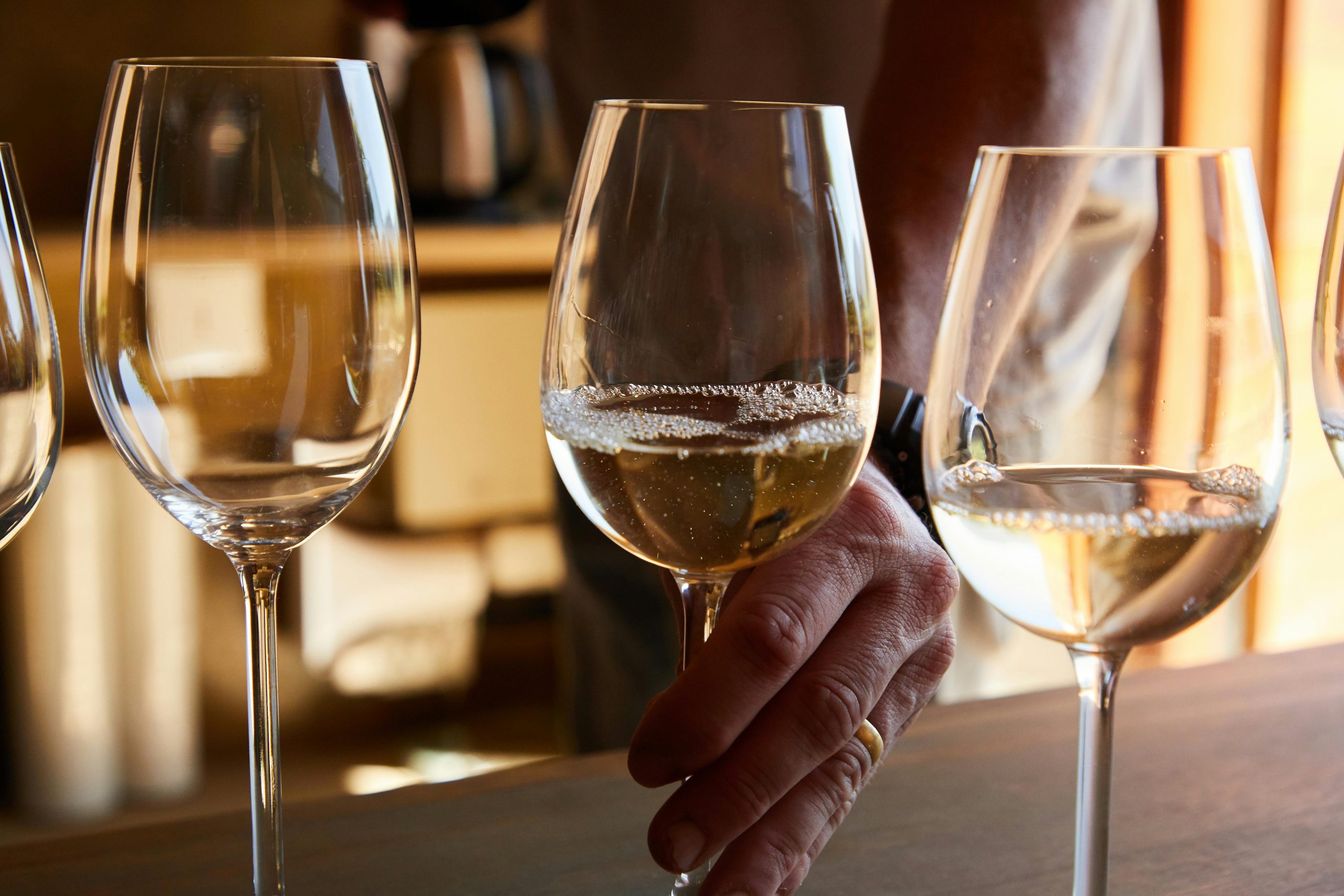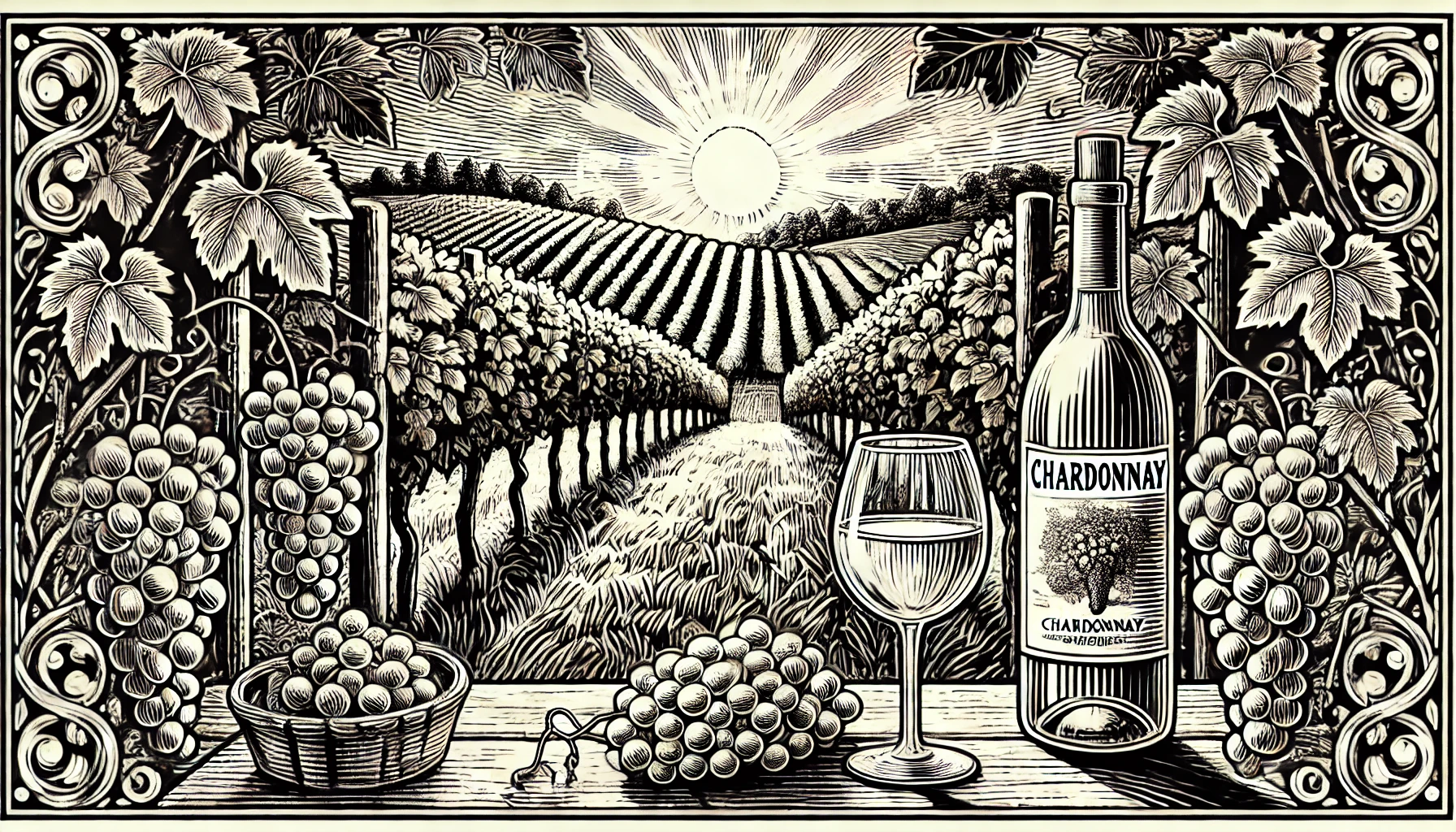
When it comes to wine, few grapes can boast the versatility of Chardonnay. Whether you’re in the mood for something crisp and refreshing, warm and cozy, or even bold and buttery, there’s a Chardonnay out there ready to match your vibe. And unlike other wines that seem to stay in one style box, it has endless options. It’s like a friend who’s equally comfortable at a fancy dinner party or a laid-back night in.
1. Feeling Chill? Go for Crisp, Unoaked Chardonnay
Some days, you want simplicity. Think refreshing, easy-drinking wine that doesn’t demand too much attention. Crisp, unoaked Chardonnay is the perfect answer. This style comes from cooler climates, like Chablis in France or New Zealand, where winemakers skip the oak barrels to keep things light and pure.
Without the influence of oak, unoaked Chardonnay maintains a vibrant, citrusy character. Imagine flavors like green apple, lemon, and a hint of minerality. These flavors create a refreshing vibe that’s perfect for a casual mood—like a sunny afternoon with friends or a solo night catching up on your favorite series.
Pairing Tip: Unoaked, it shines with simple, fresh foods. Try it with a seafood platter, sushi, or a fresh salad. Check out this Chardonnay food pairing guide for even more ideas to match this mood!
2. Craving Coziness? Reach for Buttery, Oaked Chardonnay
When it’s time to get cozy, nothing beats a rich, buttery Chardonnay. This style is all about warmth, depth, and indulgence. It’s the ultimate comfort wine, thanks to the magic of oak aging and malolactic fermentation, which gives the wine those signature creamy, buttery notes.
Most oaked Chardonnays hail from warmer regions like California, where grapes get the sunshine they need to develop lush, ripe flavors. Expect notes of vanilla, buttered popcorn, and tropical fruits like pineapple. This type of Chardonnay wraps you up like a blanket and sets the tone for cozy evenings, fireside chats, or rainy days.
Pairing Tip: The richness of oaked Chardonnay pairs beautifully with creamy dishes. Think roasted chicken, lobster in butter sauce, or a creamy pasta alfredo. Decanting this wine can bring out its complexity, so you might want to explore The Art of Decanting to learn how to do it right.
3. Feeling Bold? Choose a Big, Bold Chardonnay
Sometimes, you need a wine that makes a statement. When you’re in the mood for something that won’t be overshadowed, reach for a bold, full-bodied Chardonnay. These wines often come from regions like Napa Valley or the Barossa Valley in Australia, where the sunny climate helps create big, powerful flavors.
A bold Chardonnay doesn’t hold back. Expect flavors of ripe peaches, mango, and even a hint of toasted oak. These wines are rich, full-bodied, and intense, making them ideal for when you’re feeling like the life of the party. They’re also excellent for pairing with food, especially bold dishes with lots of flavor.
Pairing Tip: Bold Chardonnay loves bold flavors. Grilled salmon, pork tenderloin, and creamy blue cheese all bring out the richness of this style.

4. Going Adventurous? Try Chardonnay from Unexpected Regions
If you’re in the mood for something unique, try a Chardonnay from an unexpected place. Think about exploring wines from emerging regions like Oregon, Chile, or South Africa. These wines often showcase a balance of both crisp and creamy elements, creating a flavor profile that keeps you on your toes.
Chardonnays from these regions often bring out intriguing notes of green melon, honeysuckle, or a hint of earthiness. They’re perfect for those moments when you feel like stepping outside your comfort zone. This style of Chardonnay invites you to explore something new, breaking away from traditional wine choices and embracing the unfamiliar.
Pairing Tip: These Chardonnays are versatile with food. Pair them with dishes that highlight fresh, seasonal ingredients, like roasted vegetables or grilled white fish. You could even go a little wild and decant a particularly earthy Chardonnay to bring out more complexity.
5. Feeling Festive? Celebrate with Sparkling Chardonnay
Nothing says celebration like bubbles! Sparkling Chardonnay, or Blanc de Blancs, offers a fun and effervescent twist on this classic grape. Blanc de Blancs is usually made entirely from Chardonnay grapes, especially in Champagne or other sparkling wine regions. This style is light, refreshing, and made for festive occasions.
Sparkling Chardonnay offers bright, zesty flavors with notes of green apple, pear, and a toasty finish. It’s perfect for weddings, anniversaries, or just because! Pop open a bottle to add a little sparkle to any moment. It’s a wine that instantly lifts the mood and sets a celebratory tone.
Pairing Tip: Sparkling Chardonnay pairs wonderfully with a wide range of foods, from fried appetizers to delicate pastries. The bubbles cut through richness, making it ideal with creamy brie or oysters.
6. Ready to Unwind? Sip a Mellow Chardonnay at the End of the Day
Sometimes, you just need to unwind with something mellow and balanced. A mellow Chardonnay offers the perfect way to kick back after a long day. This style is often lightly oaked or aged in neutral barrels, creating a wine that’s smooth, balanced, and easygoing.
Mellow Chardonnay is all about gentle flavors—think yellow apple, soft pear, and a touch of honey. It doesn’t try to be the star of the show, making it ideal for low-key evenings or quiet dinners. This is the type of Chardonnay that soothes and relaxes, like a warm bath after a busy day.
Pairing Tip: Mellow Chardonnay pairs well with dishes that aren’t too intense. Try it with roasted chicken, mild cheeses, or a simple pasta with olive oil and garlic. A gentle decant can help open up this wine, bringing out more of its subtle layers.

7. Feeling Playful? Get Funky with Natural or Biodynamic Chardonnay
For those in a playful mood, a natural or biodynamic Chardonnay is the perfect pick. These wines are made with minimal intervention, allowing the true character of the grape to shine. Natural Chardonnays can be a little wild, often offering unexpected notes like bruised apple, a slight nuttiness, or even a touch of salinity.
This style of Chardonnay might not be for everyone, but if you’re in the mood to experiment and embrace the unexpected, a natural white is a great choice. It’s the kind of wine that brings something new to the table every time, with flavors that can shift and change as you sip.
Pairing Tip: The adventurous flavors of natural Chardonnay call for equally bold food choices. Try it with funky cheeses, roasted cauliflower, or even spicy dishes. And don’t be afraid to let this wine sit in the glass or give it a light decant to help it open up.
Why Chardonnay Deserves a Spot in Every Wine Lover’s Collection
Chardonnay is a grape with range. It can be light or rich, crisp or creamy, simple or complex. It’s like having a whole world of wine options wrapped up in one grape. This versatility makes it a wine that can truly match any mood, whether you’re feeling adventurous, cozy, or ready to celebrate.
And remember, exploring the many faces of Chardonnay doesn’t have to end here. Each bottle, region, and winemaking style brings something different to the table. So next time you’re choosing a wine, think about your mood.
